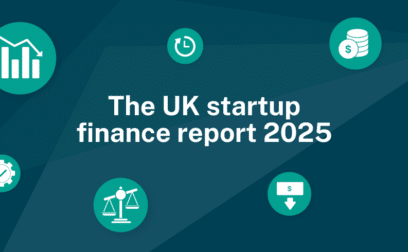TABLE OF CONTENTS
Page written by Rachel Wait. Last reviewed on July 11, 2024. Next review due April 6, 2026.

Bridging loans are a type of short-term loan that can help you ‘bridge the gap’ if you want to buy a property before selling another one. Loans typically last for 12 months but can stretch up to three years, and they can usually be arranged quickly.
But if you want to apply for a bridging loan, how do you know if you’re eligible? Here’s everything you need to know about getting accepted for a bridging loan.
Each lender will have its own list of eligibility criteria if you want to take out a bridging loan. This means that while you might get rejected by one lender, you could be accepted by another. But in general, you’ll need to be at least 18 years old and lenders will usually consider the following factors:
As bridging loans are a type of secured loan, you’ll need to use an asset as security when you apply for your loan. This could be one property or multiple properties. You can secure the loan against the property you’re buying as well as your existing property. If you’re unable to repay your bridging loan, the lender has a right to repossess the properties with a view to selling them to recoup its money.
Your lender will also require you to have an exit strategy when you take out a bridging loan. This shows lenders how you plan to repay the amount borrowed. There are several acceptable exit routes, including:
Depending on the lender, you’ll typically need to borrow at least £10,000 to £25,000. There’s not usually an upper limit to the amount you can borrow.
You’ll need to tell the lender what you want to use your bridging loan funds for. This might be to:
As with any form of finance, the better your credit rating, the better your chances of being accepted for a bridging loan and securing the lowest interest rates. That said, lenders will be less concerned about your credit history compared to other forms of borrowing. Instead, they will be more focused on the asset you use as security and the strength of your exit plan.
If you’re planning to sell the security property to repay your loan, your credit history won’t matter as much as long as there’s a good chance of the property selling during the term of the loan. But if your exit strategy is to refinance, your credit history will be more important as you’ll need to meet the lender’s criteria.
If you have poor credit, you could still be eligible for a bridging loan, but interest rates might be slightly higher.
Most bridging loans require a deposit of at least 25% to 30%, but the more you can put down, the better the interest rate you’re likely to secure.
If your exit strategy is the sale of a property, your lender is unlikely to require proof of income as there are usually no monthly interest payments to make. Interest is usually added into the loan and repaid once the property is sold. However, if you’re planning to refinance, you might need to show evidence of your income to help the lender assess whether you’re in a good financial position to remortgage.
Lenders might also consider factors such as your employment status, your minimum turnover, how experienced you are in the property market and the condition of the property you want to buy.
If you’re not sure whether a bridging loan is right for you or if you’ll be eligible, you could consider the following alternatives:
You could choose to remortgage your current property and borrow a larger sum so that you release equity in your home. However, you’ll need to renegotiate the terms with your existing lender and could end up paying a higher rate of interest. Plus, there might be valuation, legal and arrangement fees to pay, as well as an early repayment charge if you’re getting out of your existing deal early. Remortgaging will also take longer compared to taking out a bridging loan.
A secured loan requires you to use an asset, usually your home, as security. You can use a secured loan to release equity from your property on a second charge basis. This means you have two mortgages secured on the one property. The advantage of this over remortgaging is that your existing mortgage deal remains unchanged and you won’t have to remortgage the whole amount onto a higher rate.
However, remember that if you fail to keep up with your repayments, your lender can repossess your property to recoup its money.
Unsecured loans don’t require collateral, making them less risky for the borrower. However, you typically won’t be able to borrow more than £25,000 so they won’t suit everyone. Interest rates also tend to be higher compared to secured loans.
Commercial mortgages can be secured against commercial property or land for commercial development. Commercial mortgages tend to have longer repayment periods and interest rates can be higher than for residential mortgages. That’s because commercial mortgages are considered higher risk.
You can use development finance to fund property development projects. Property development finance is usually used to fund ground up development projects, while property refurbishment finance is more suited to conversion and refurbishments.
If you have enough in savings, you could use this money to help fund your project. Alternatively, it could be worth speaking to family members or friends who might be able to loan you some cash. However, things can get tricky if you’re unable to repay the loan, so it’s crucial to have a loan agreement in writing.
If you’re thinking about taking out a bridging loan but don’t know where to start, the team at Swoop would be happy to help. We can talk you through the different options and help you find the ideal lender for your business. Get in touch today.
G
E
T
Q
U
O
T
E
Related pages
Get your free business loan quote today
Apply in minutes
FREE no obligation, personalised
quote
FCA regulated
G
E
T
Q
U
O
T
E
Join the 110,000+ businesses just like yours getting the Swoop newsletter.
Free. No spam. Opt out whenever you like.



























We work with world class partners to help us support businesses with finance
Kingfisher Way, Silverlink Business Park, Newcastle upon Tyne, NE28 9NX, UK
View in Google MapsAberystwyth Innovation and Enterprise Campus
Gogerddan Campus
Aberystwyth University
Ceredigion
SY23 3EE
Dogpatch Labs, The CHQ Building, Custom House Quay, Dublin, Ireland
View in Google MapsSuite 801, Level 8, 84 Pitt Street, Sydney, NSW 2000, Australia
View in Google Maps43 W 23rd St, New York, NY 10010, United States
View in Google Maps21 Dreyer Street, Cape Town, South Africa, 7708
View in Google Maps
Disclaimer: Swoop Finance helps UK firms access business finance, working directly with businesses and their trusted advisors. We are a credit broker and do not provide loans or other finance products ourselves. We can introduce you to a panel of lenders, equity funds and grant agencies. Whichever lender you choose we may receive commission from them (either a fixed fee of fixed % of the amount you receive) and different lenders pay different rates. For certain lenders, we do have influence over the interest rate, and this can impact the amount you pay under the agreement. All finance and quotes are subject to status and income. Applicants must be aged 18 and over and terms and conditions apply. Guarantees and Indemnities may be required. Swoop Finance can introduce applicants to a number of providers based on the applicants’ circumstances and creditworthiness. Swoop Finance Limited is registered with the Financial Conduct Authority as an Account Information Services Provider (reference number 833145). Swoop Finance Limited is authorised as a credit broker under FCA registration number 936513. If you feel you have a complaint, please read our complaints section highlighted above and also contained within our terms and conditions. Swoop Finance Ltd is registered with Companies House (company number 11163382, registered address The Stable Yard, Vicarage Road, Stony Stratford, Milton Keynes MK11 1BN). VAT number: 300080279
Clever finance tips and the latest news
Delivered to your inbox monthly
Join the 110,000+ businesses just like yours getting the Swoop newsletter. Free. No spam. Opt out whenever you like.
Thanks for requesting a call back
a member of the team will be in touch.




